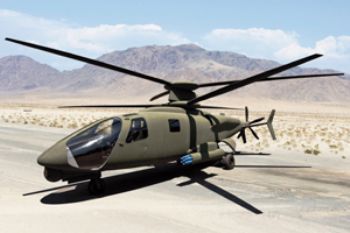
Sikorsky Aircraft Corp has begun final assembly of the prototype S-97 Raider helicopter, following delivery of the fuselage structure from Aurora Flight Sciences, which is a partner in the project.
Consisting of an integrated cockpit, cabin and tail cone, the composite fuselage has arrived at Sikorsky's Development Flight Centre in West Palm Beach, Florida, where the company will assemble the light tactical rotor-craft, which is designed to out-perform conventional military helicopters in speed, manoeuvrability, payload, range and high-altitude operations.
Debra Zampano, director of the S-97 Raider programme, said: “The delivery of the first fuselage is a significant milestone in the industry-funded Raider programme. We look forward to showcasing this aircraft’s exceptional performance and value to the US military.”
Sikorsky plans to begin demonstrating the Raider’s capabilities to the US military and other potential customers in 2015. Configured to Sikorsky’s X2 co-axial design, the fly-by-wire helicopter will feature counter-rotating rigid main-rotor blades for lift and forward flight, plus a pusher propeller for high-speed acceleration and deceleration.
Sikorsky showed the efficiency of the rigid-rotor co-axial design in 2010, when its X2 demonstrator helicopter achieved a flight speed of 250 knots — twice the speed of conventional helicopters. It also demonstrated low pilot workload and low acoustic signature.
The Raider will improve on the X2 demonstrator by showcasing precision manoeuvres at low speed, high-g turning manoeuvres at over 200 knots, hot-day hover performance at altitudes up to 10,000ft, and improvements in payload and flight endurance compared with conventional light tactical helicopters.
Aurora Flight Sciences is one of 36 industry partners making components for the Sikorsky-led Raider programme. The mostly carbon-fibre fuselage structure was fabricated at its manufacturing facility in Bridgeport, West Virginia.
Aurora president and COO Mark Cherry said: “The Raider fuselage was designed around a set of rigorous requirements necessary for this next-generation aircraft.”